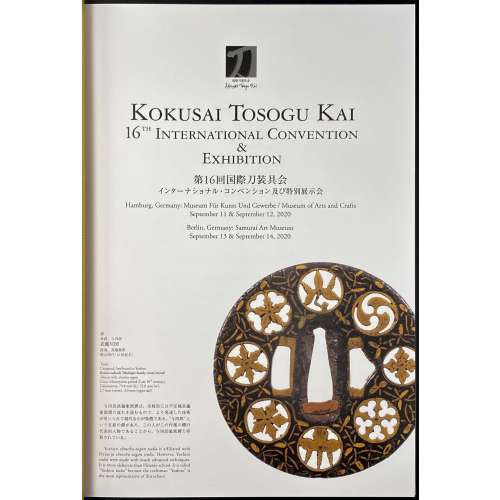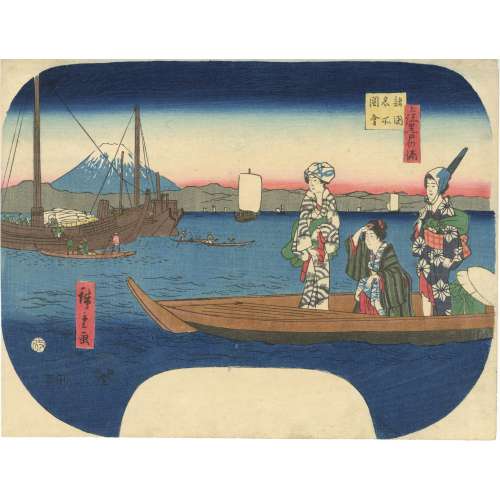Artist:
Utagawa Kunisada [歌川 国貞] a.k.a. Utagawa Toyokuni III [三代歌川豊国] (Japanese, 1786 – 1865).
Block cutter:
Yokokawa Takejirō [横川竹二郎] (Japanese, fl. 1845 – 1863), seal Hori Take [彫竹].
Publisher:
Ibaya Senzaburō [伊場屋仙三郎] (Japanese, fl. C. 1845 – 1847).
Title: Book of an incoming ship [入船帳] (
Irifune-chō).
Series: Comparison of Eight Books of Proficiency and Eloquence [口も手も美立八帳] (
Kuchimo temo mitate hatchō).
Date seal and aratame censor seal: 1856 (Ansei 3).
Signed:
Toyokuni ga in toshidama cartouche.
Media: Untrimmed fan print (uchiwa-e), 231 x 300 mm.
Provenance: The Collection of Paul F. Walter, Christie's, New York, 2017, lot 341; sold together with 5 other fan prints for $25,000. Before: Israel Goldman, Japanese Prints, Catalogue 11, 2005, no. 37.
Ref: [
LIB-1693.2018] The Collection of Paul Walter. — NY: Christie's, 2017, p. 363.
Ref:
Israel Goldman, Catalogue 2018, № 51: "Utagawa Kunisada (1786-1865) A Beauty Seated in a Boat. From the series Mitate hatcho (A Parody of Eight Books). 1856. Fan print. 23.3 x 30 cm. Provenance: Israel Goldman, Japanese Prints, Catalogue 11, 2005, no. 37, The Collection of Paul F. Walter, Christie's, New York, 2017, lot 341. Fine impression, colour and condition. The title contains the saying: “Kuchi mo hatcho te mo hatcho (As quick with one’s hand as one’s tongue)."
Special thanks to Horst Graebner for the detailed description.





















